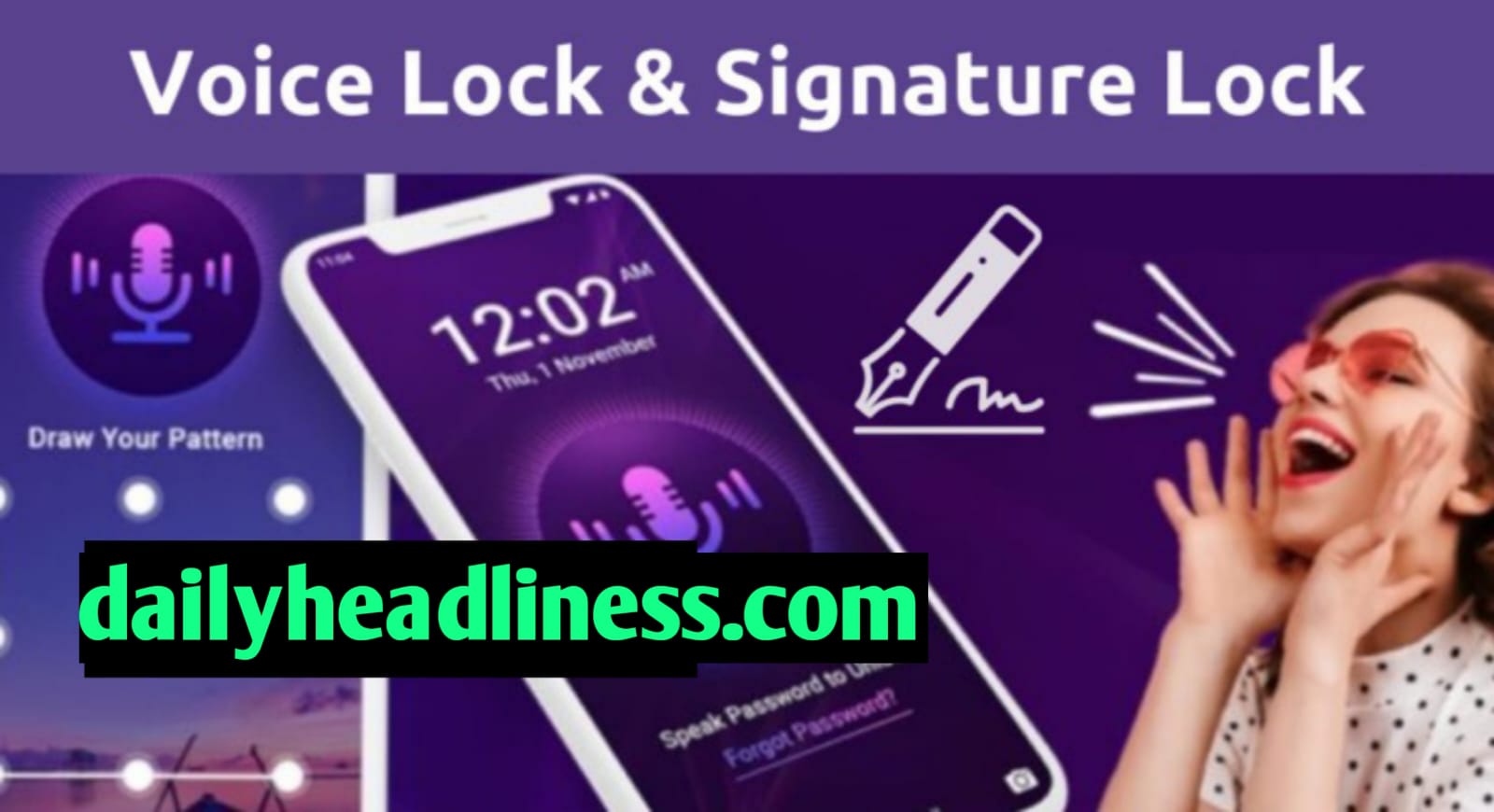In the evolving landscape of personal security, advancements in technology continue to redefine how individuals safeguard their digital and physical assets. Traditional methods such as passwords and PINs are being complemented and, in some cases, replaced by innovative biometric solutions like Voice Lock and Signature Lock. These technologies offer promising avenues for enhanced security, convenience, and accessibility in a world increasingly interconnected through digital platforms.
Evolution of Personal Security
The concept of personal security has transformed significantly over the years. From physical locks and keys to digital passwords and biometric authentication, the goal has always been to ensure that access to sensitive information and resources remains restricted to authorized individuals. However, as the digital age progresses, the vulnerabilities associated with traditional security measures have become more apparent.
Passwords, for instance, are often criticized for their susceptibility to hacking, phishing, and brute-force attacks. Users frequently resort to easily memorable (and consequently less secure) combinations, or reuse passwords across multiple accounts, compromising their overall security posture. This has prompted a shift towards biometric authentication methods, which leverage unique physiological or behavioral characteristics of individuals for identity verification.
Introducing Voice Lock Technology
Voice Lock technology represents one such advancement in biometric security. By analyzing the unique features of an individual’s voice, including pitch, tone, and cadence, Voice Lock systems can create a digital voiceprint that serves as a secure identifier. This voiceprint is then used to authenticate the user’s identity when accessing devices, applications, or sensitive information.
How Voice Lock Works
- Voice Enrollment: During the initial setup, the user records a sample of their voice, typically by reading a predefined text or series of phrases. This recording captures various vocal characteristics that are unique to the individual.
- Voiceprint Creation: The recorded voice sample is processed to create a voiceprint, which is essentially a digital representation of the user’s vocal characteristics. This voiceprint is stored securely and used as a reference for future authentication attempts.
- Authentication: When the user attempts to access a protected resource, they are prompted to speak a passphrase or respond to a voice command. The system compares the live voice sample with the stored voiceprint to verify the user’s identity. If the samples match within an acceptable margin of error, access is granted.
Benefits of Voice Lock
- Enhanced Security: Voiceprints are difficult to replicate or forge, providing a higher level of security compared to traditional passwords.
- Convenience: Users do not need to remember complex passwords or carry physical tokens; authentication is seamless and can be performed quickly.
- Accessibility: Voice Lock technology can be particularly beneficial for individuals with disabilities or those who struggle with traditional input methods.
- Improved User Experience: Eliminates the frustration of forgotten passwords and reduces the time spent on authentication processes.
Challenges and Considerations
Despite its promise, Voice Lock technology faces several challenges that warrant consideration:
- Accuracy: Voice recognition systems may struggle with background noise, accents, or changes in vocal characteristics due to illness or age.
- Privacy Concerns: Storing and securing voiceprints raises privacy concerns, as with any biometric data. Robust encryption and strict access controls are essential.
- Sophisticated Attacks: As with any security measure, Voice Lock systems are not immune to advanced spoofing or replay attacks.
Signature Lock Technology
Alongside Voice Lock, Signature Lock technology offers another innovative approach to biometric authentication. Signature Lock utilizes the unique way individuals sign their names or perform gestures on touchscreens as a means of identity verification.
How Signature Lock Works
- Signature Enrollment: Users are prompted to create a digital signature by signing on a touchscreen device using a stylus or their finger. The system records the dynamics of the signature, such as speed, pressure, and stroke patterns.
- Signature Template Creation: Similar to voiceprints, Signature Lock systems create a digital template based on the captured signature dynamics. This template serves as a reference for future authentication attempts.
- Authentication: When accessing a secured resource, users are required to sign on the touchscreen again. The system analyzes the live signature against the stored template to verify identity.
Benefits of Signature Lock
- Unique Identifier: Signatures are highly individualized, making them difficult to replicate or imitate accurately.
- Intuitive: Most people are familiar with signing their names, making Signature Lock systems easy to adopt and use.
- Secure: Like Voice Lock, Signature Lock offers a robust alternative to traditional password-based security methods.
Applications and Future Directions
The integration of Voice Lock and Signature Lock technologies extends beyond personal devices to various industries and sectors:
- Financial Services: Banks and financial institutions can enhance transaction security and streamline customer authentication processes.
- Healthcare: Secure access to electronic health records and patient information can be facilitated using biometric solutions.
- Government Services: Biometric authentication can strengthen the security of government databases and improve service delivery.
Future Developments and Challenges
As technology continues to evolve, the future of Voice Lock and Signature Lock technologies holds promise for even more secure, efficient, and user-friendly authentication solutions. However, ongoing research and development are essential to address:
- Interoperability: Ensuring compatibility across different platforms and devices.
- Ethical Considerations: Safeguarding user privacy and preventing misuse of biometric data.
- Regulatory Frameworks: Establishing clear guidelines and standards for the collection, storage, and use of biometric information.
Conclusion
Voice Lock and Signature Lock technologies represent significant advancements in the realm of personal security, offering robust alternatives to traditional password-based authentication methods. By leveraging unique biometric characteristics, these technologies enhance security, improve user experience, and support accessibility across various applications and industries. As adoption continues to grow, so too will the need for ongoing innovation, collaboration, and vigilance to ensure these technologies fulfill their potential while safeguarding user privacy and security in an increasingly digital world.



